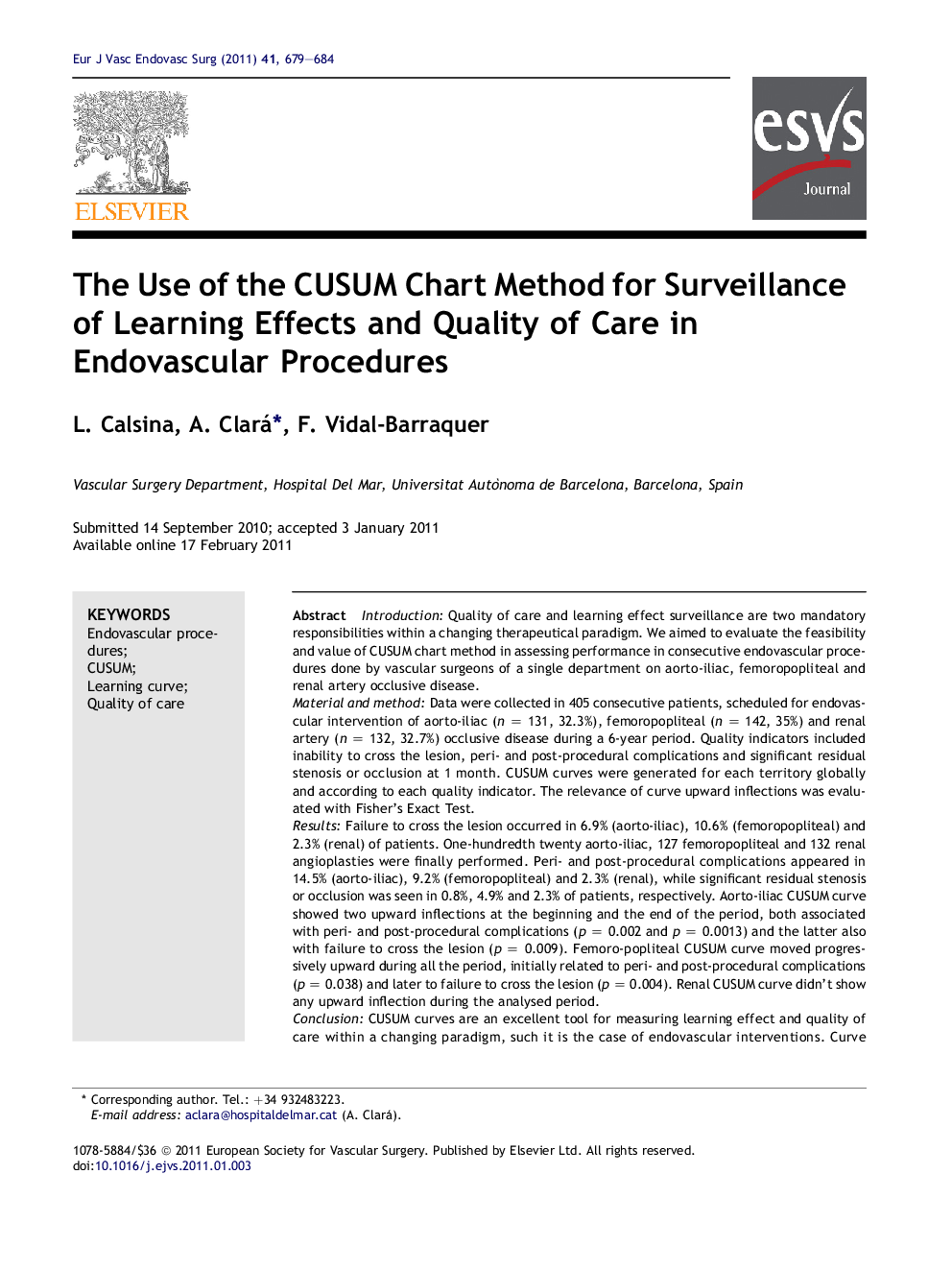| کد مقاله | کد نشریه | سال انتشار | مقاله انگلیسی | نسخه تمام متن |
|---|---|---|---|---|
| 2913426 | 1575492 | 2011 | 6 صفحه PDF | دانلود رایگان |

IntroductionQuality of care and learning effect surveillance are two mandatory responsibilities within a changing therapeutical paradigm. We aimed to evaluate the feasibility and value of CUSUM chart method in assessing performance in consecutive endovascular procedures done by vascular surgeons of a single department on aorto-iliac, femoropopliteal and renal artery occlusive disease.Material and methodData were collected in 405 consecutive patients, scheduled for endovascular intervention of aorto-iliac (n = 131, 32.3%), femoropopliteal (n = 142, 35%) and renal artery (n = 132, 32.7%) occlusive disease during a 6-year period. Quality indicators included inability to cross the lesion, peri- and post-procedural complications and significant residual stenosis or occlusion at 1 month. CUSUM curves were generated for each territory globally and according to each quality indicator. The relevance of curve upward inflections was evaluated with Fisher’s Exact Test.ResultsFailure to cross the lesion occurred in 6.9% (aorto-iliac), 10.6% (femoropopliteal) and 2.3% (renal) of patients. One-hundredth twenty aorto-iliac, 127 femoropopliteal and 132 renal angioplasties were finally performed. Peri- and post-procedural complications appeared in 14.5% (aorto-iliac), 9.2% (femoropopliteal) and 2.3% (renal), while significant residual stenosis or occlusion was seen in 0.8%, 4.9% and 2.3% of patients, respectively. Aorto-iliac CUSUM curve showed two upward inflections at the beginning and the end of the period, both associated with peri- and post-procedural complications (p = 0.002 and p = 0.0013) and the latter also with failure to cross the lesion (p = 0.009). Femoro-popliteal CUSUM curve moved progressively upward during all the period, initially related to peri- and post-procedural complications (p = 0.038) and later to failure to cross the lesion (p = 0.004). Renal CUSUM curve didn’t show any upward inflection during the analysed period.ConclusionCUSUM curves are an excellent tool for measuring learning effect and quality of care within a changing paradigm, such it is the case of endovascular interventions. Curve upward inflections can be further interpreted according to the type of “failure” thus helping to evaluate their underlying causes.
Journal: European Journal of Vascular and Endovascular Surgery - Volume 41, Issue 5, May 2011, Pages 679–684